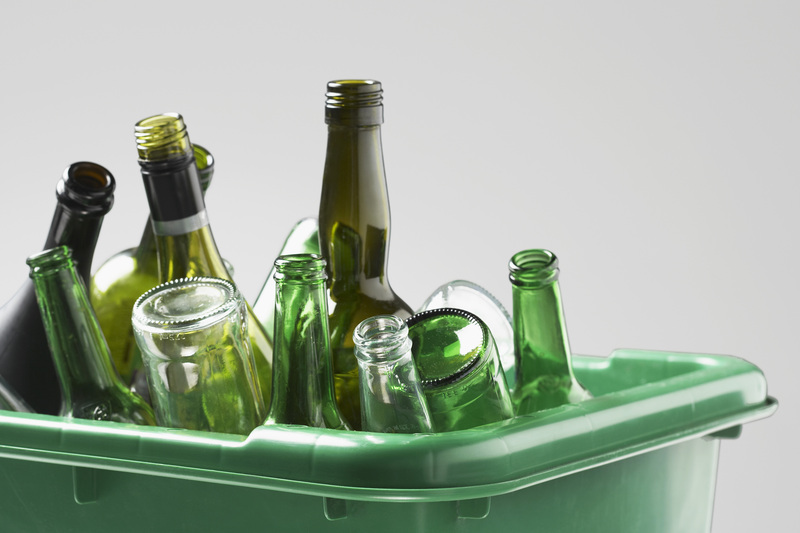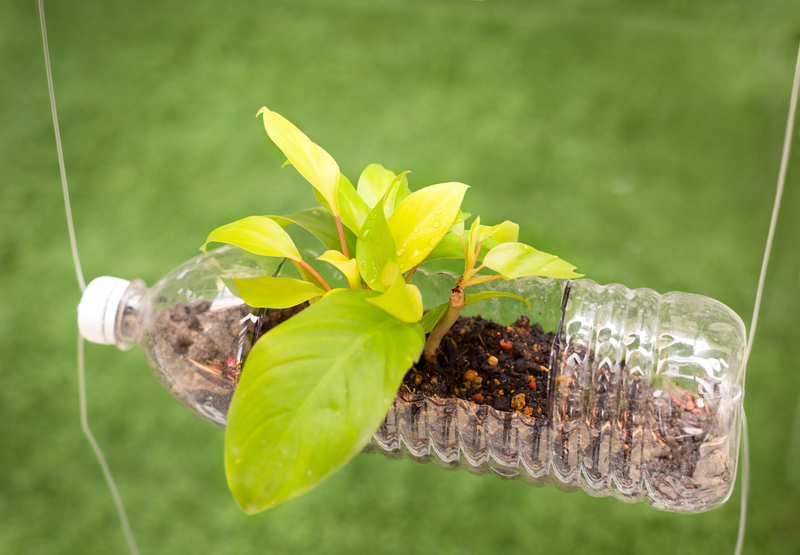From Trash to Treasure: Recycling Pots and Pans
Ever wondered what happens to your old pots and pans after they're tossed in the trash? Discover how recycling cookware not only saves the environment but can also turn rusty kitchenware into valuable resources. Dive into this comprehensive guide about how to recycle pots and pans and give your old cookware a brand-new life!
Why Recycling Cookware Matters
According to environmental experts, the kitchen is one of the biggest sources of household waste. Surprisingly, one overlooked waste stream is old pots and pans. Every year, millions of cookware pieces end up in landfill, where they take decades, if not centuries, to decompose.
- Metal cookware significantly contributes to landfill waste.
- When pots and pans rust or break, most people throw them away instead of seeking recycling options.
- Many cookware materials are fully recyclable!
Recycling not only diverts heavy metals from landfills but also reduces the need for mining virgin materials, minimizing environmental damage. By learning more about recycling old pots and pans, we advance towards a greener future.

What Types of Pots and Pans Can Be Recycled?
Before tossing that scratched frying pan or warped saucepan, let's break down which items are recyclable. Most cookware falls into several categories:
- Stainless Steel Pots and Pans
- Aluminum Cookware (including nonstick pans)
- Copper-bottomed Pans
- Cast Iron Skillets
- Ceramic or Glass Bakeware
The recyclability largely depends on their construction--metal-based cookware is generally easier to recycle than ceramic or glass. But don't worry; we'll explore all the options further below.
How to Check If Your Cookware Is Recyclable
- Identify the Material: Most pans have a stamped label on the bottom indicating if they're stainless steel, aluminum, or otherwise.
- Check for Coatings: Some pans are coated with nonstick, Teflon, or enamel. These coatings may affect the recycling process, requiring special handling.
- Remove Non-Metal Parts: Cookware with plastic, silicone, or wooden handles should have these parts removed if possible, as most recycling centers only accept pure metals.
- Contact Your Local Recycler: Policies vary, so always check with municipal guidelines before leaving pans at the curb.
Tip: Magnetic pans are usually steel or cast iron; non-magnetic ones are often aluminum or copper.
How to Prepare Your Pots and Pans for Recycling
Proper preparation is essential to ensure your landscape of used cookware ends up recycled instead of at the dump.
- Clean Thoroughly: Wash to remove food residue and oils.
- Detach Handles: Unscrew or break off plastic, wood, or rubber pieces.
- Sort by Material: Group by type--steel, aluminum, cast iron, etc. This simplifies the recycling process.
Note: Do not mix cookware with glass or general household recycling bins if local guidelines prohibit it.
Where to Recycle Your Old Cookware
Not every community recycling program accepts old pots and pans with curbside recyclables. But don't give up! There are multiple alternatives:
Local Scrap Metal Yards
Scrap yards are usually the best option for recycling metal cookware. They accept various metal types and are equipped to separate items into pure streams. Some will even pay you by weight!
- Call ahead to confirm they accept cookware and to clarify any guidelines.
- Bring only clean, metal-only (no plastic) items.
Specialty Recycling Drop-Off Centers
Certain municipal recycling depots and household hazardous waste (HHW) events collect worn-out pots, pans, and bakeware. Check your municipality's website for details.
Manufacturer Take-Back Programs
Many brands now run "take-back" recycling schemes. For instance:
- Calphalon offers mail-in recycling for their aluminum cookware.
- GreenPan promotes drop-off events for nonstick pans.
- Other brands may offer discounts or credits for returned old pans when you purchase new ones.
Charity Shops and Giveaways
If the cookware is still usable, consider donation! Many thrift stores, community kitchens, and shelters welcome donations of gently used cookware.
- Donate only if the pans are safe and clean.
- Ask local non-profits about their needs.
- Online platforms like Freecycle or Facebook Marketplace are great for giving away items.
Creative Alternatives to Recycling: Upcycling Pots and Pans
Not ready to send your once trusty saute pan off to the scrap heap? Upcycling is a fantastic way to give kitchen items a second life, reduce waste, and create something new and useful.
Garden and Outdoor Uses
- Planters: Old pots, especially cast iron or deep saucepans, make excellent rustic plant holders. Drill a drainage hole, fill with soil, and plant flowers or herbs.
- Bird Bath: Shallow pans can serve as charming birdbaths.
- Decor: Paint or embellish the exterior of skillets or pots for whimsical garden art.
Home Decor & Organization
- Wall Art: Unique-shaped pans can be cleaned, painted, and hung on kitchen or garden walls as artwork.
- Storage: Use pans with intact handles to sort sewing supplies, tools, or stationery.
- Clocks: Upcycle circular pans into creative wall clocks.
Craft Projects
- Wind Chimes: Attach spoons and small pans with string for musical garden ornaments.
- Candle Holders: Small copper or aluminum pans serve as durable bases for homemade candles.
- Pet Dishes: Check the material for safety, then sanitize for a quirky pet bowl.
With a little creativity, your trash becomes someone's treasure--or your own!
What Happens After Pots and Pans Are Recycled?
Curious about the afterlife of your tired old skillet? Here's a glimpse into the recycling process of cookware:
- Sorting: Recyclers separate the metals by type--stainless steel, aluminum, copper, or iron.
- Shredding: Machinery shreds the cookware into small pieces.
- Melting: The metal fragments are melted at very high temperatures.
- Purification: Impurities are removed to ensure high-quality metal.
- Forming: The purified metal is cast into new shapes for construction materials, new pans, car parts, electronics, and more!
By recycling, you're not just clearing out your cupboard--you're helping create new products without the environmental cost of mining and smelting virgin metals. Your recycled pan's next life could be anything from a bicycle to a bridge!
The Environmental Impact of Cookware Recycling
Why is recycling cookware so vital for the planet? Consider these environmental benefits:
- Reduces Energy Consumption: Recycling metals takes up to 95% less energy than mining and processing new metal.
- Minimizes Greenhouse Gas Emissions: Less energy means fewer emissions contributing to climate change.
- Conserves Natural Resources: Every recycled pan saves raw materials for future generations.
- Reduces Landfill Waste: Metal cookware sticks around in landfills for centuries. Recycling keeps our ecosystems cleaner.
- Prevents Toxic Leaching: Some older cookware may contain harmful metals. Responsible recycling keeps toxins out of the soil and waterways.
Making the simple choice to recycle or upcycle your old pots and pans has a powerful ripple effect. It supports the circular economy and protects our environment for generations to come.
Common Mistakes to Avoid When Recycling Cookware
As with any recycling journey, some pitfalls can stand between your eco-friendly ambitions and real impact. Watch out for these common mistakes when dealing with pot and pan recycling:
- Putting Non-Metal Cookware in the Metal Stream: Ceramic or glass cookware must be handled separately. Don't mix materials!
- Leaving Food or Grease: Pans must be thoroughly scrubbed. Dirty recyclables may be rejected.
- Ignoring Coated Surfaces: Nonstick and enamel finishes could require special recycling or disposal procedures.
- Forgetting to Remove Handles: Metal recyclers may refuse pans with plastic or wood handles attached.
- Not Checking Local Regulations: Municipality rules for recycling cookware vary widely. Always confirm accepted items before drop-off or collection.
Avoiding these missteps maximizes the chance your cookware finds a new life and doesn't wind up as landfill fodder.

Educational Ideas: Teaching Kids About Reusing and Recycling Pots and Pans
Turning recycling old cookware into a family activity is a powerful way to teach youth the value of environmental stewardship. Here are some project ideas for parents and teachers:
- Upcycled Planter Workshop: Let children decorate and plant flowers in old pots.
- Recycling Field Trips: Visit local recycling centers to show kids where old pans go.
- Art from Junk: Use worn out kitchen items to craft sculptures or unique household items.
- Kitchen Science: Teach about metal properties using old pots for safe experiments.
These hands-on experiences make the concept of trash-to-treasure tangible and fun.
Conclusion: Turn Your Old Pots and Pans From Waste to Worth
The next time you retire a battered saucepan or a nonstick skillet loses its coating, think twice before tossing it into the garbage. With so many sustainable ways to recycle and upcycle pots and pans, your efforts can benefit both the planet and your community.
- Scrap metal recycling and manufacturer take-back programs help turn your old cookware into new products.
- Charitable donation and creative upcycling offer new lives to battered but functional items.
- Educating young minds about reuse ensures a greener future.
Remember: Every pan saved from landfill keeps our resources in circulation and reduces our environmental impact.
If you're ready to give your kitchenware a second life, follow local recycling guidelines, explore upcycling ideas, or share your still-useful pots and pans with those in need. Together, we can turn trash into real, lasting treasure!
```